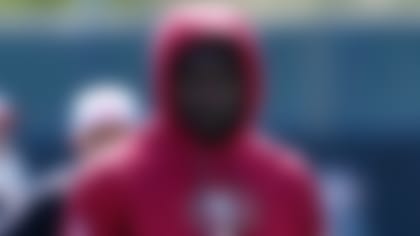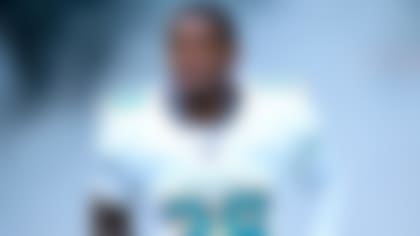If you're an avid follower of the navy and orange, there's good and bad news. The good? Chicago is 3-1 and better than its pitiful offensive display against the New York Giants on Sunday night.
The bad? Get used to Jay Cutler hitting the deck.
All those dudes sporting Otis Wilson jerseys at John Barleycorn's in Wrigleyville were so excited about booting former offensive coordinator Ron Turner for Mike Martz that they didn't read the small print on Martz's résumé: Quarterbacks in his system get hit. A lot.
Already, Bears quarterbacks have been dropped 18 times this season, most in the NFL and three more than second-place Philadelphia and Arizona. But it's nothing new for Martz. In his last gig as the 49ers' OC in 2008, San Francisco allowed 55 sacks -- easily the most in the league. Now, a contrarian might mention that his quarterbacks were Shaun Hill and J.T. O'Sullivan, who are not exactly Montana and Young.
But how about his stint with the Detroit Lions in 2006 and 2007? Jon Kitna and the other Detroit quarterbacks were dropped 63 and 54 times, respectively, in those seasons.
Clearly, Cutler's butt on the turf Sunday night (he was sacked nine times in first half before leaving the game with a concussion) was not an anomaly. So why do Martz-coached offenses seemingly always come with this offshoot?
It's an issue of risk and return.
Martz should never be confused as an orchestrator of the dink-and-dunk. He wants to move down the field in big chunks. Throwing vertically is as much a staple of his offense as the swing pass out to Marshall Faulk is. Deep slants, square-ins of the 15- to 20-yard variety, and hitting receivers in stride on intermediate routes are all staples of his passing attack.
The reward is all the deep slants you saw Isaac Bruce and Torry Holt turn into 20- and 25-yard gains over and over again from 1999-2001.
The risk of getting these large chunks of yardage every play is the amount of time it takes. Intermediate routes, even if they're one-cut and go (which most routes in Martz's system are), take a few seconds to run. These plays require the quarterback to take deeper drops while giving receivers ample time to run their routes. The extra half-second or so it takes for the wideout to get to his spot -- as well as the quarterback to drop and set up -- is often the difference between a sack and getting the ball released.
So how do most offensive coordinators handle the risk of getting their quarterbacks beat down? Max protection by leaving a tight end and/or running back in to block.
Martz hasn't traditionally been a big fan of that. It's not unusual for Martz to send five receivers out on a play, while his quarterback is left with just his offensive line to stand between him and the pass rush. If the defense blitzes, so be it -- or at least that's often the thinking.
Kurt Warner, who was so successful in Martz's system while with the Rams, would know where the free man was coming from and take the hit while exploiting the single coverage left behind. He still got sacked a hair more than the average quarterback, but the Rams' offensive production far outweighed the downside of the sacks and knockdowns ... that is, until Warner got hurt for the first of several times in 2002.
The problem is that not every quarterback is like Warner, who prepared enough to know who would come open in certain blitz/coverage situations and would deliver the ball accurately.
Another issue with the Martz offense is one of its general principles: Throw to a spot and trust that the receiver will be there to meet the ball. Running one-cut routes means just that. There isn't a lot of juking and double moves, so wide receivers have to be deceptive without wasting a whole lot of time doing so.
In St. Louis, Bruce and Holt both ran good routes. They were reliable and smart, not to mention fast. But when Martz was in San Francisco he had one of the least-talented wide receiver corps in the league, while in Detroit he had no threat of a running game to keep defenses honest.
Both situations -- in Detroit and San Francisco -- didn't pan out well for Martz because he didn't have the personnel.
Meanwhile, in Chicago, Cutler's accuracy is still questionable, as are his wide receivers. Devin Aromashodu showed some promise last season, as did Johnny Knox. But how good are they at getting open and making plays, much less scaring opposing defensive backs?
"When I was in San Francisco, I wouldn't blitz Martz... if I felt my guys were overmatched with their receivers, I'd play two deep safeties and try to limit the big play," said NFL Network analyst Jim Mora, who was the 49ers' defensive coordinator from 1999-2003. "But I'd blitz a lot if I felt I had them on their heels."
The Giants clearly didn't feel overmatched by Knox and Co. and had Cutler on his heels from the opening kickoff.
Part of that was due to an ineffective Bears offensive line that should have been addressed the last couple of offseasons. It's an Achilles heel for a system that doesn't lend itself often to helping the line with extra pass protection. In fact, even when Martz did leave a tight end in to block Giants pass rushers, the line still struggled mightily. Not to mention, the holes haven't been there for running back Matt Forte.
For the Martz-Cutler marriage to really work in Chicago, it has to be more than a one-season project. Otherwise, recent history will repeat itself: Lots of hits on Cutler without the total yardage success to overshadow them.
Numbers game
» Is there a correlation between the Giants' nine sacks in the first half against Cutler and the Bears' lack of investment in offensive linemen in the draft in recent years? Chicago has only drafted one offensive lineman in the first three rounds of their last eight drafts. Eight! Talk about not addressing a position group.
» More Bears bad news: They are 10 of 47 on third downs (21.3 percent) this season. That's last in the league.
» The Bills have faced third-and-greater-than-6 yards a total of 26 times this season. They've converted two of them.
» Terrell Owens became the oldest player in NFL history to record more than 200 receiving yards (222), at 36 years and 300 days old. James Lofton was previously the oldest to have done it in 1991 when he was 35.
» The Texans have allowed at least 24 points in every game this season.
» The Lions have lost 23 straight road games. They're in danger of breaking their own NFL record of 24.
» Neckbeard is redonkulous this year. Kyle Orton is on pace to throw for 5,676 yards, well beyond Dan Marino's NFL mark of 5,084.




